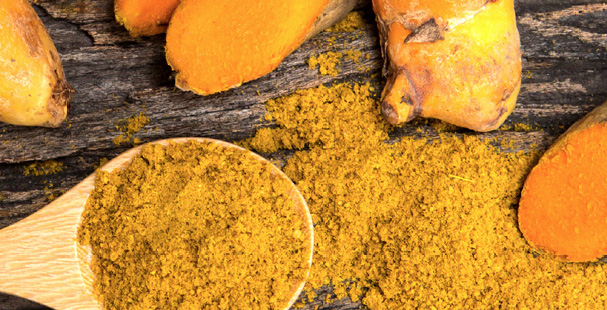After centuries as a culinary and medicinal staple in India, Africa and parts of Asia, turmeric is having a moment here in the United States. This deep-yellow member of the ginger family topped the 2016 Google 2016 Food Trends list of rising stars – beating out cauliflower rice, vegan doughnuts and even Funfetti.
With claims that it might cure Alzheimer’s disease, cancer and a host of modern ailments, turmeric is also the spicy subject of much scientific study.
Eliot Eunchung Kwon, a master’s student in the USC Leonard Davis School’s Nutrition, Healthspan and Longevity program, recently reviewed research on this ancient antidote. Her report, published in the November issue of Vegetarian Nutrition Update, a peer-reviewed publication of the Academy of Nutrition and Dietetics, explores the promise and pitfalls of this perennial plant.
Here is some of what she learned:
The Key is in the Color
Curcumin is the substance that gives turmeric its golden color. It is also believed to be a crucial component in its therapeutic potential for treating a range of conditions including arthritis, inflammatory bowel disease, Alzheimer’s disease and cancer.
Taking it In
Although studies have shown that curcumin has promise for treating and preventing diseases, it is difficult for the body to absorb. This, says Kwon, has been a major obstacle in achieving clinical effects. Some studies show that an ingesting an ingredient in black pepper helps with curcumin absorption. Another says adding fatty foods like olive oil, avocado and milk might work too.
Is it Safe?
Clinical trials report curcumin is safe and without major adverse side effects, even at high doses. Some studies showed healthy people could tolerate up to 12 grams of curcumin (a tablespoon of turmeric contains .136 grams) but others report that high doses or long term use can cause indigestion, nausea or diarrhea. Another study says it can exacerbate gallbladder disease and advises that anyone with gallbladder problems should avoid using turmeric or curcumin as supplement.
Where We Are
Curcumin has not been approved for the treatment of human diseases and there are no clear dosage recommendations. Kwon says further studies and clinical trials will provide a starting point for using turmeric in disease treatment and prevention. In the meantime, she recommends drinking all this in over a cup of turmeric tea – with a pinch of pepper, of course.

USC MSNHL student Eliot Eunchung Kwon
Turmeric Golden Milk Tea
Yield: 2 servings
Ingredients
- 2 cups of unsweetened almond milk (or coconut or soy milk, or your choice)
- 1 teaspoon ground turmeric
- 1 tablespoon peeled, grated fresh ginger
- 3-4 black peppercorns
For serving
- 1 tablespoon honey or maple syrup (optional)
- 1 teaspoon ground cinnamon
Instructions
- Whisk all ingredients in a small saucepan and bring to a low boil.
- Reduce heat to low and simmer for about 10 minutes.
- Strain and top with a dash of cinnamon, and sweeten if desired.
Enjoy!





